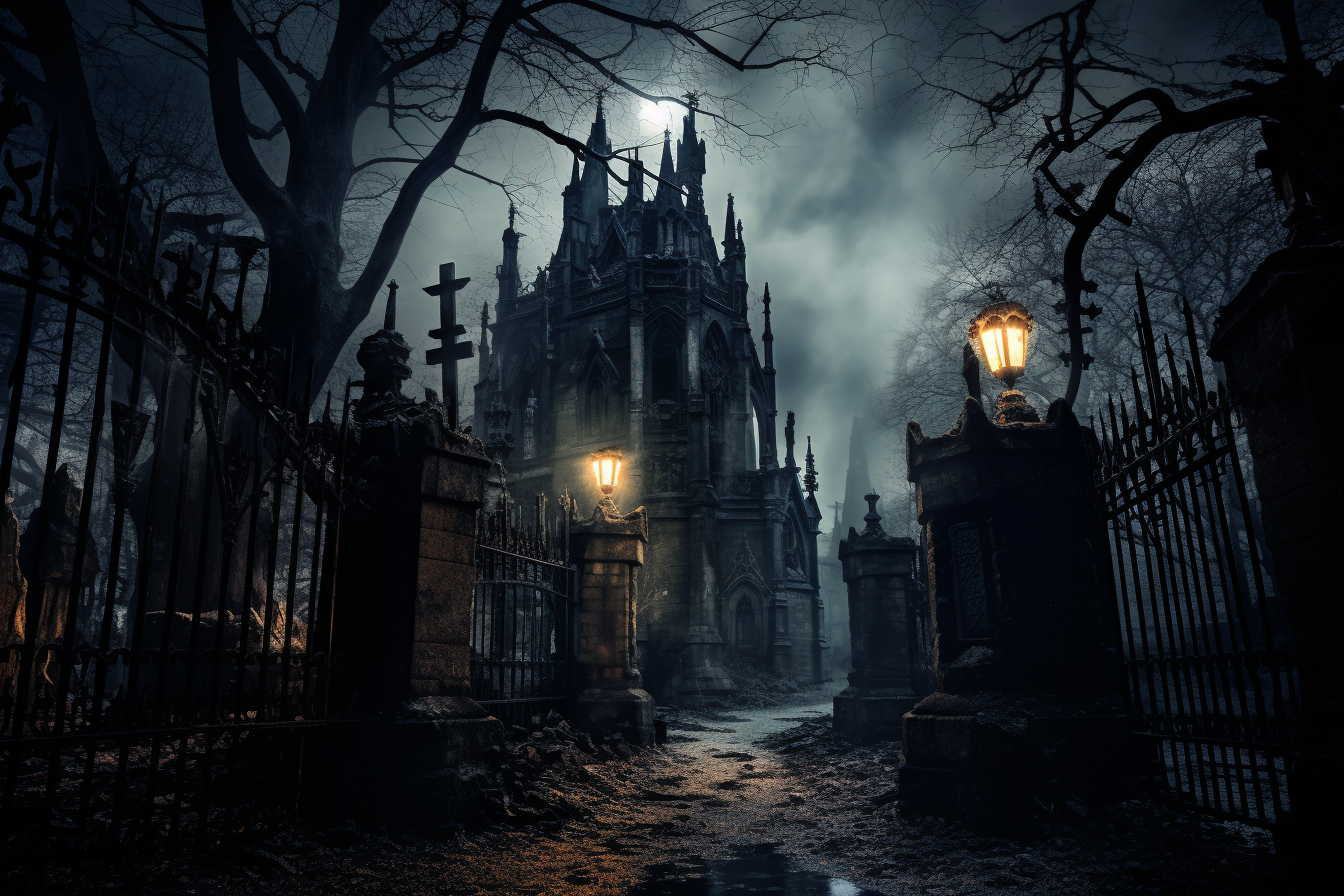In the vast landscape of literary history, there are moments when the pendulum of literary trends and styles abruptly swings from one side to the other. One of these fascinating turning points was the emergence of the Gothic Novel, born as a bold reaction to the rationality and belief in progress of the Enlightenment. In this article, we will take you on a journey into the dark and thrilling world of the Gothic Romance.
The Enlightenment, an era marked by science, reason, and the relentless march of progress, dominated the sober literary scene of its time. But as often happens in literature and in life, it was only a matter of time before the pendulum swung to the other side. Romanticism brought a revolution of sensibility, emphasized the emotional life, and a deep connection to nature. Here, the individual human being took center stage, with all their strengths, weaknesses, desires, and fears.
In the year 1764, a literary innovation emerged into the public eye – Horace Walpole’s „The Castle of Otranto,“ which is considered the first Gothic Novel and Gothic Romance. This work embodied many elements that also characterize modern Gothic Romance:
- A Mad Villain: Walpole presented an antagonist who epitomized madness in its purest form.
- A Medieval-inspired, Menacing Setting: The Castle of Otranto provided a gloomy backdrop filled with mysteries and horrors.
- A Young Innocent Woman in Trouble: A typical heroine of the Gothic Romance, entangled in mysterious events.
- Violating Feelings and Moral Taboos: The story evoked emotions that exceeded the moral boundaries of the time.
- Supernatural Creatures: In Walpole’s work, eerie apparitions and supernatural elements abounded.
- An Overbearing Father Figure: A tyrannical father dominated the fate of the protagonists.
- A Male Hero with Restraint: The male hero loved the heroine with appropriate restraint.
All these elements, suppressed during the Enlightenment, burst forth in „The Castle of Otranto“ in their full glory. Overwhelming, extreme emotions like fanatical love, dark themes like rape, incest, and murder, and people relentlessly pursuing their visions of a good life – all contributed to the birth of the Gothic Romance.
Another milestone in the Gothic Novel landscape was Ann Radcliffe’s „The Mysteries of Udolpho.“ The story of Emily St. Aubert, a young, innocent, beautiful, and courageous heroine, became a sensation. Here, too, all the important elements of the Gothic Romance could be found: an overbearing father figure in the form of Emily’s tyrannical guardian, and an innocent, art-loving orphan who triumphed through patience and courage. Ann Radcliffe also created one of the most popular recurring motifs in romance novels – the heroine who must choose between two men, one revealed as good and the other as evil.
For Radcliffe’s audience, the choice was clear: the villain was harsh, ruthless, demanding, unyielding, and obsessed – a truly eerie character who would captivate readers until the end of the novel.
In the dark world of the Gothic Novel, literature found a new dimension where the boundaries between reality and fantasy blurred. This fascinating literary movement brought the dark and mysterious into focus, laying the foundation for many timeless works that continue to captivate our imagination to this day. Thus, the Gothic Novel emerges as an exciting chapter in the history of literature, drawing us into its spell and transporting us to a world full of mysterious adventures and gripping emotions.

